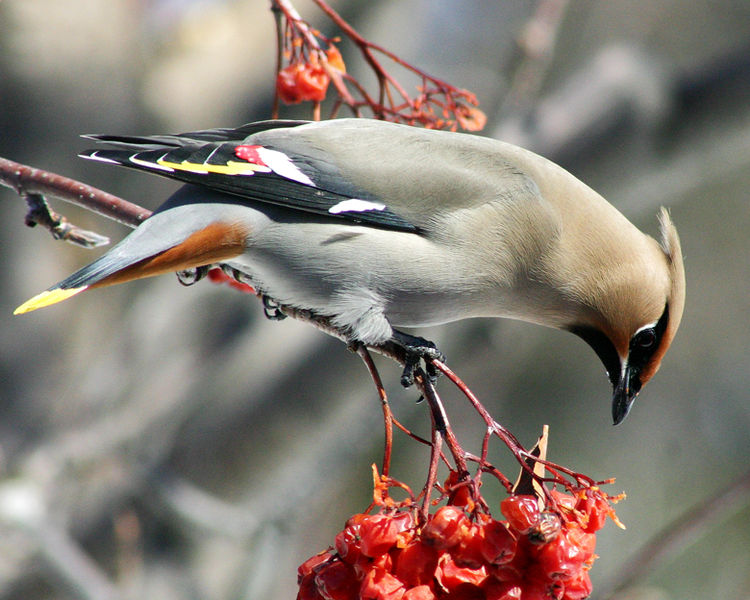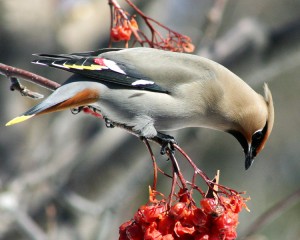The Bohemian Waxwing Bombycilla garrulus might not be a bird you are too familiar with, but this winter might change all that, for it seems we’re heading for a Waxwing winter. Don’t worry; Waxwings are not giant, flesh-eating birds. They are, in fact, a small and very beautiful passerine species that migrate to our lands to feast on fruiting bushes and trees.
The breeding range of the Bohemian Waxwing extends across most of northern Europe, Asia and western North America, and our nearest breeding populations are to be found in northern Sweden and Finland. These exotic-looking birds visit us each winter in small numbers but some years, known as irruption years, when the resources available at their breeding grounds are not enough to meet the demands of the population, there are huge migratory influxes into Ireland and Britain. One such cause of these irruption years is a failure of the berry crop and this is said to have happened across Scandinavia this year.
These birds typically arrive on the north and east coasts and make their way inland as they gorge on our rowan, hawthorn, rose hip and cotoneaster berries. Waxings tend to frequent urban areas as rowan and other trees line many of our gardens, streets and car parks (so next time you’re out shopping stop, listen and have a wee look around). I’ve heard from numerous people this year that the berry crop in Ireland has been very poor and this could spell bad news for the Waxwings. On top of this, we receive huge influxes of winter thrushes such as Redwing, Fieldfare and continental Blackbirds which are also berry fans, making for stiff competition.
So what then for the Waxwings? It seems likely they will keep pushing further west and south in search of more food – some have already shown up in Kerry, Cornwall and the Isles of Scilly! It will be exciting to see reports next year from monitoring programmes such as BirdTrack as to how far south, and in what numbers, the Waxwings were forced to migrate in search of food. You can take part in reporting them too. It will also be very interesting to see how their populations fare over the winter, especially if it’s a severe one. Let’s hope they fare well.
Author
Sean Kelly: kellys17
Photo credit
wikimedia commons


